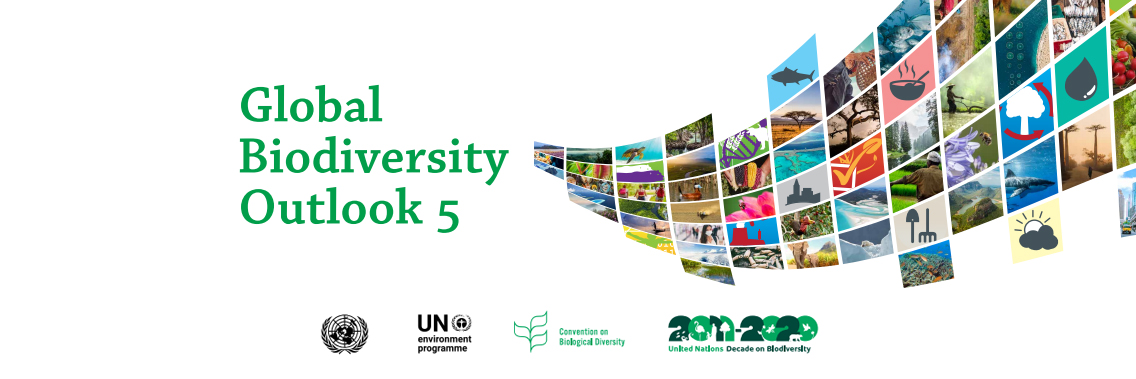Despite encouraging progress in several areas, the natural world is suffering badly and getting worse. Eight transformative changes are, therefore, urgently needed to ensure human wellbeing and save the planet, the UN warns in a major report.
The report comes as the COVID-19 pandemic challenges people to rethink their relationship with nature and to consider the profound consequences to their own wellbeing and survival that can result from continued biodiversity loss and the degradation of ecosystems.
The Global Biodiversity Outlook 5 (GBO-5), published by the UN Convention on Biological Diversity (CBD), offers an authoritative overview of the state of nature. It is a final report card on progress against the 20 global biodiversity targets agreed in 2010 with a 2020 deadline, and offers lessons learned and best practices for getting on track.
“This flagship report underlines that ‘humanity stands at a crossroads with regard to the legacy we wish to leave to future generations,’” said CBD Executive Secretary, Elizabeth Maruma Mrema.
“As nature degrades,” Ms. Mrema continued, “new opportunities emerge for the spread to humans and animals of devastating diseases like this year’s coronavirus. The window of time available is short, but the pandemic has also demonstrated that transformative changes are possible when they must be made.”
With respect to the Aichi Biodiversity Targets, set in 2010, the analysis based on the 6th set of national reports to the CBD and the latest scientific findings shows that seven of 60 “elements” — success criteria — within the 20 targets have been achieved and 38 show progress. In the case of 13 elements, no progress was made, or a move away from the target was indicated, and for two elements the level of progress is unknown. The report concludes that, overall, of the 20 targets, six of them (9, 11, 16, 17, 19 and 20) were partially achieved by the 2020 deadline.
“Now, we must accelerate and scale-up collaboration for nature-positive outcomes – conserving, restoring and using biodiversity fairly and sustainably. If we do not, biodiversity will continue to buckle under the weight of land- and sea-use change, overexploitation, climate change, pollution and invasive alien species. This will further damage human health, economies and societies – with particularly detrimental effects on indigenous peoples and local communities” said Inger Andersen Executive Director, UNEP.
By partially met, GBO5 refers to targets where at least one distinct element has been met. For example, the elements of Target 11 regarding the proportions of lands and seas protected was met, but the elements related to the quality of protected areas were not. Similarly, for Target 19, biodiversity knowledge has improved but it has not been widely shared or applied. For Target 20, official development assistance doubled but resources did not increase from all sources.
The national reports to the CBD offer evidence that the types of transitions needed moving forward are beginning; that virtually all countries are taking steps to protect biodiversity.
GBO5 cites several exemplary national actions and programmes, in the absence of which conditions would certainly be worse (extinctions would be higher for example).
In addition, for example, deforestation rates continue to fall, eradication of invasive alien species from islands is increasing, awareness of biodiversity appears to be increasing.
The report calls for a shift away from “business as usual” across a range of human activities. It outlines eight transitions that recognize the value of biodiversity, the need to restore the ecosystems on which all human activity depends, and the urgency of reducing the negative impacts of such activity:
- The land and forests transition
- The sustainable agriculture transition
- The sustainable food systems transition
- The sustainable fisheries and oceans transition
- The cities and infrastructure transition
- The sustainable freshwater transition
- The sustainable climate action transition
- The biodiversity-inclusive One Health transition
Read the report: Global Biodiversity Outlook (GBO-5).
Original source: UNEP

